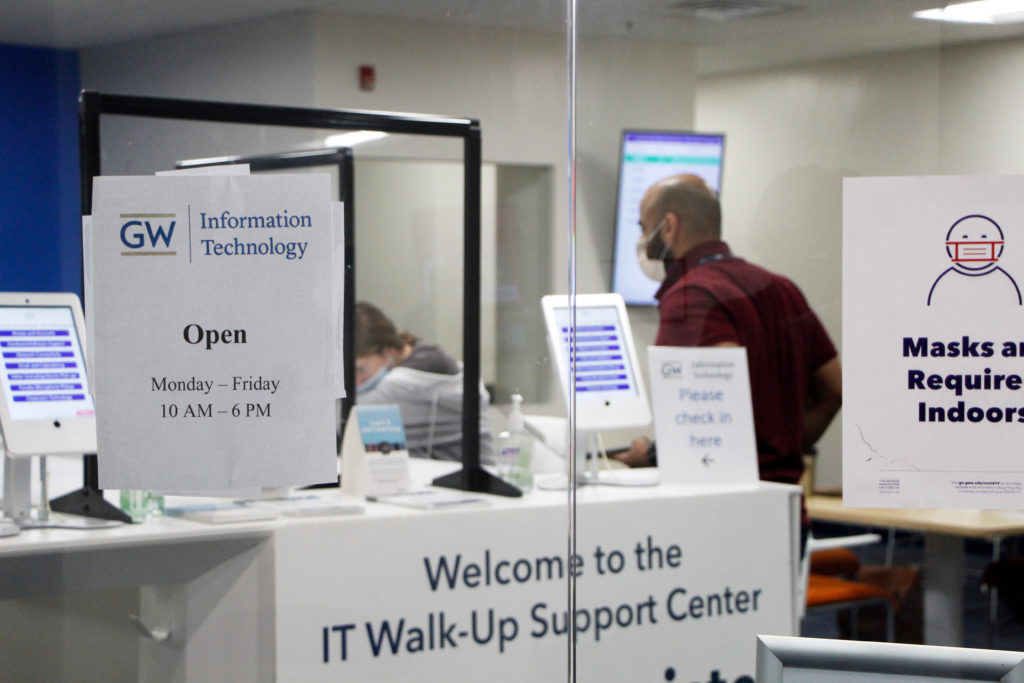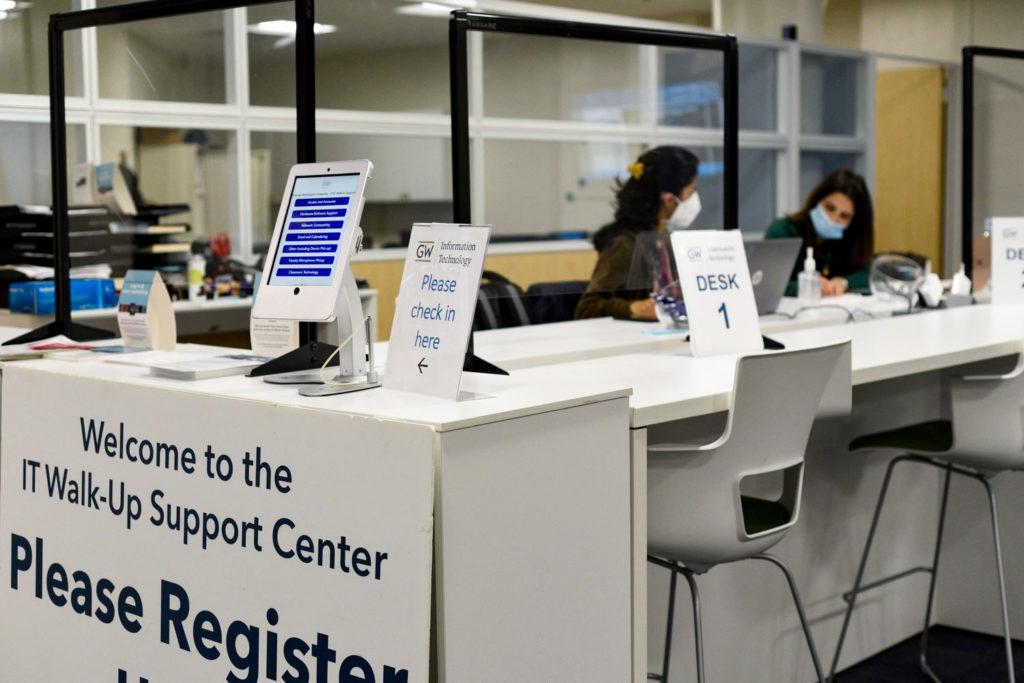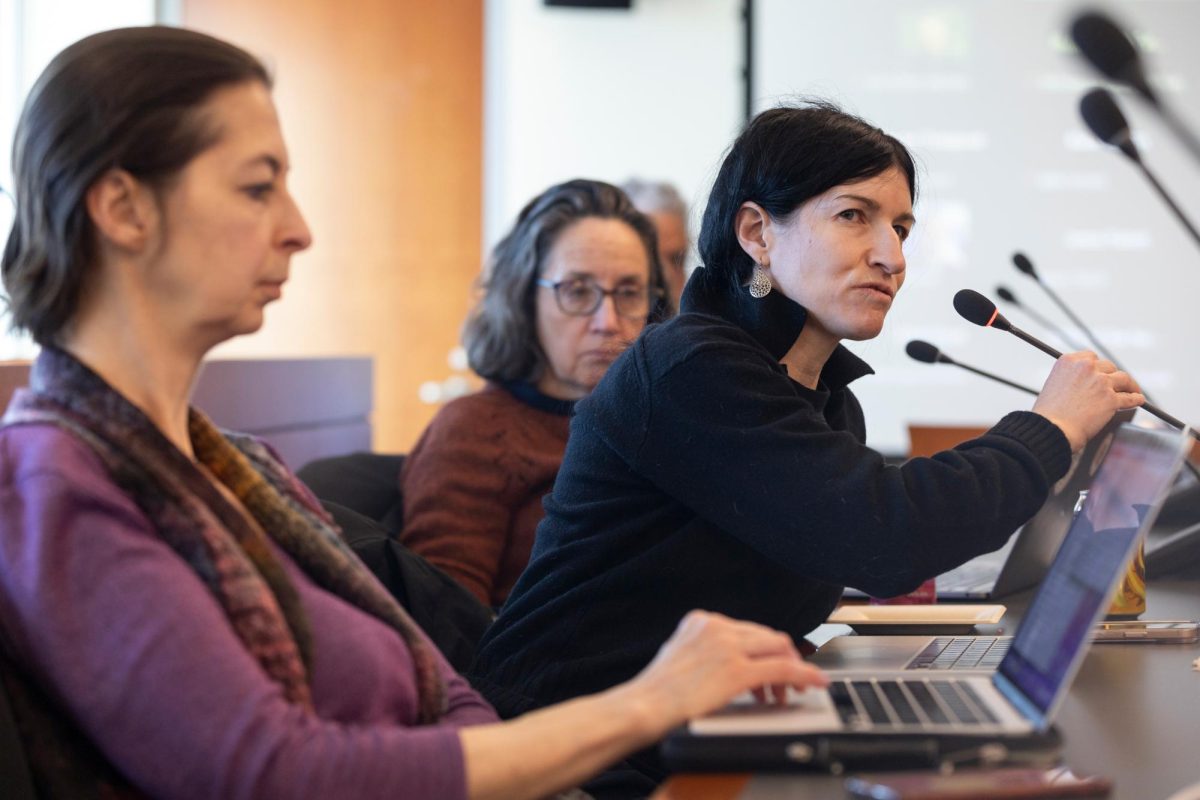As officials struggle to fill staff positions across the University, experts said the labor shortages could be the result of virtual work that has shifted employees’ work-life balance priorities during the COVID-19 pandemic.
Interim leaders currently hold at least nine key positions at GW in offices ranging from the University president to chief technology officer, and officials have said a smaller hiring pool during the pandemic has accounted for some of the temporary staff selections. Experts said universities must offer more flexibility and improve employee work-life balance when hiring to circumvent these shortages.
GW’s interim leadership positions include an interim provost, vice president and general counsel, vice president for communications and marketing and vice provost for career services. The University’s interim director of the office of human research, senior associate provost for undergraduate education and managing director in the technology commercialization office also fall under the list.
Board of Trustees Chair Grace Speights said officials hired interim University President Mark Wrighton to replace former University President Thomas LeBlanc at the start of the year partly because they were “concerned” about finding a long-term candidate for GW’s top post given the large number of presidential searches across universities nationwide.
“We also felt that the University needed to be in the strongest possible position to attract the best talent,” Speights said in an email in September.
Higher education institutions like Michigan State University have also faced employee shortages in recent months, with understaffed dining halls and research labs among the consequences of the strained labor market.
GW has also operated without a permanent information technology leader since former Chief Information Officer Loretta Early stepped down in September 2020 as officials laid off employees and centralized the existing staff. Since then, Jared Johnson, the interim chief technology officer, has led a department that faculty said last semester has been understaffed and overwhelmed with information technology support requests.
Officials laid off dozens of technology staff last year to mitigate the financial impact of the pandemic and asked them to reapply for a smaller number of positions under the new structure.
“The market for technology and digital talent is not immune to the same forces that are impacting several other areas of the labor market,” Chief Financial Officer Mark Diaz said in an email last year. “While the evolving market presents challenges, it simply requires GW to heighten our efforts to find the best qualified candidate.”
Jessica Parillo, the director of Counseling and Psychological Services, said last month the service would be looking to hire up to six therapists to help manage an influx of appointments. Parillo said CAPS faces a “significant challenge” hiring new therapists as the University competes with neighboring institutions to hire from a limited pool of D.C.-based counselors and navigate an increased demand for psychological services because of the pandemic.
“The pandemic changed our field in permanent ways, where now, therapists are often choosing to just start out with no overhead, doing telehealth and private practice,” Parillo said at a Faculty Senate meeting in December. “Someone out of a master’s program can easily make like $160,000 a year where they’re going to make not even half of that here.”
Experts in labor economics said shortages are likely a result of various labor culture changes, like increased opportunities to move up to higher positions and a desire for less demanding hours, which have risen since the pandemic forced many to work from home in 2020.
Chandini Sankaran, an associate professor of economics at Boston College, said the pandemic has caused many within the high-wage labor market to “rethink” elements of their work-life balance and look for less demanding jobs, making higher positions in institutions like universities difficult to fill.
“During the pandemic, people started to rethink what was important of course in their lives, and I know many people were reestablishing their family ties,” Sankaran said. “So maybe people are looking for jobs that are not as demanding.”
Sankaran said being overworked is a common issue in higher education. She said a job like president is one that requires someone to be dedicated at all times, making the search process difficult for such a demanding position.
“The issue of overwork definitely exists as well in higher education,” Sankaran said. “That might be one of the other reasons why it’s so difficult to recruit somebody as university president, for example, because university president is not just a 9-to-5 job.”
Brigham Frandsen, an associate professor of economics at Brigham Young University, said many parents left their jobs to care for their children at the beginning of the pandemic. But he said at the university administration level, officials would primarily leave their positions to take better jobs elsewhere.
“There’s quite a bit of mobility at the top levels of university leadership,” he said. “It’s very common for university presidents to serve for a number of years and then go on to some other university.”
Frandsen said the effects of current labor shortages could last up to “a year or more” after the pandemic ends. He said universities can be more successful in filling vacancies by offering employees more flexibility with “more creative” scheduling and onsite childcare.
“I think that’s a big demand right now for workers,” he said. “They’re looking for flexible jobs, and so they need to find more creative ways to schedule shifts, ways for people to be able to be hired and to take a job but not to be locked into a specific schedule. I think that’s one of the most helpful things they could do.”
Aiden Orr and Faith Wardwell contributed reporting.








